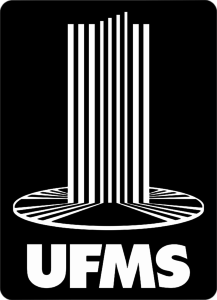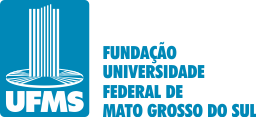Use este identificador para citar ou linkar para este item:
https://repositorio.ufms.br/handle/123456789/2193| Tipo: | Dissertação |
| Título: | Aplicação de geotecnologias como subsídio ao zoneamento físico do meio: estudo de caso em seis municípios de Mato Grosso do Sul |
| Título(s) alternativo(s): | Application of geotechnologies as an aid to the physical zoning of the environment: case study in six municipalities of Mato Grosso do Sul state |
| Autor(es): | Moreira, Erika Silva |
| Primeiro orientador: | Paranhos Filho, Antônio Conceição |
| Resumo: | A área de estudo desta dissertação cobre 27.980 km2 contendo dois importantes sistemas ambientais em constante sinergia, Pantanal e Cerrado. De reconhecida relevância internacional, sofrem com a rápida modificação da cobertura do solo, resultante da expansão das atividades agropecuárias e políticas governamentais. A partir da comparação pósclassificação de imagens Landsat TM foi possível observar a dinâmica da cobertura do solo na região de interesse entre os anos de 1996 e 2009. Os resultados mostram que, no período analisado, houve decréscimo de 8,9% da vegetação nativa de porte arbóreo e arbustivo acompanhado do aumento de 14% nas áreas de pastagem e culturas. A distância de centros consumidores e os seus peculiares processos de inundação não pouparam o Pantanal da perda de sua vegetação densa. O aumento da cobertura antrópica neste sistema atingiu 18% no curto intervalo de tempo analisado. Nem mesmo as áreas legalmente protegidas foram poupadas das influências antrópicas na distribuição e dinâmica da vegetação nativa. Quatro unidades de conservação localizadas na área de estudo foram analisadas quanto à supressão de suas coberturas nativas. Para tanto, aplicou-se a combinação de dois métodos, sendo estes o aprimoramento de imagem e comparação pós-classificação. Esta combinação foi escolhida, pois possibilita o monitoramento das mudanças ocorridas nas unidades de forma rápida e direta. É preocupante a situação das áreas protegidas, visto que as limitações impostas legalmente não impediram o desbastamento da vegetação nem mesmo dentro dos limites daquelas unidades ditas de proteção integral. Os impactos ambientais da conversão de grandes áreas de vegetação nativa, decorrentes da ocupação antrópica, são agravados quando associados à vulnerabilidade intrínseca do meio. As pressões exercidas pelo homem nos constituintes do sistema (solo, clima, vegetação, e.g.) ao exacerbar o limiar de absorção deste levam a mudanças no equilíbrio de seus processos. Estas mudanças envolvem transporte de material, evolução morfológica e rearranjo estrutural. Neste sentido, os estudos relacionados ao mapeamento da distribuição espacial da vulnerabilidade podem definir e nortear de forma racional a ocupação antrópica de um território, servindo de base para o zoneamento físico do meio. A determinação da vulnerabilidade de um sistema, assim como seu mapeamento, é conduzida através três modelos diferentes, comparando-se os resultados. A ponderação da importância dos constituintes do sistema, através do Processo Analítico Hierárquico (PAH), na determinação de sua vulnerabilidade aproximaram os modelos da realidade encontrada. Já em 1996, aproximadamente 91% da área estudada eram classificadas com grau de vulnerabilidade média e alta. As geotecnologias ofereceram excelentes resultados no mapeamento e monitoramento ambiental e territorial da área de interesse. Sua utilização mostrou-se pré-requisito para o planejamento e gestão da ocupação antrópica do território, por orientar as tomadas de decisões de maneira rápida e dinâmica, com relativo baixo custo. |
| Abstract: | The studied area of this dissertation covers 27.980 km2, having two important environmental systems in constant synergy, Pantanal and Cerrado. Of renowned international relevance, they suffer with the rapid land cover modification as a result of the expansion of farming activities and governmental policies. From the comparison of post-classification images Landsat TM, it was possible to observe the dynamics of the land cover of the studied regions between 1996 and 2009. The results show that, through that period, there was a 8,9% decrease of the native vegetation of arboreous and shrub types, following a 14% increase of pasture and cropping. The distance from consumer centers and its peculiar processes of flooding didn’t keep Pantanal from losing its dense vegetation. The increase of anthropic land cover in this system reached 18% in the short interval of the period analyzed. Not even the legally protected areas were saved from the anthropic influences in the distribution and dynamics of the native vegetation. Four conservation units located in the studied area were analyzed as to the suppression of its native land cover. In doing so, the combination of two methods was applied which consisted of enhancement of image and post-classification comparison. This combination was chosen as it enables the monitoring of the occurring changes in the units in a rapid and direct way. It is alarming the situation of the protected areas, given the fact that the limitation legally imposed didn’t stop deforestation not even in those so-called units of full protection. The environmental impacts of the conversion of vast areas of native vegetation due to anthropic occupation, are worsened when associated with the intrinsic vulnerability of the environment. The pressures caused by man on the constituent systems (soil, climate, vegetation, e.g.) when going further beyond the threshold of absorption, bring about changes in the balance of its processes. These changes involve transport of materials, morphological evolution and structural rearrangement. In this sense, the studies related to the mapping of spacial vulnerability can define and guide in a rational way the anthropic occupation of a territory, serving as a base for the physical zoning of the environment. The determination of the vulnerability of a system as well as its mapping, is conducted through three different models where the results are compared. The ponderation of the importance of the constituent systems, through the Analytic Hierarchy Process (AHP) in the determination of its vulnerability, brought the models near to the reality found. In 1996, approximately 91% of the studied area was classified with a medium to a high degree of vulnerability. Geotechnologies offered excellent results in mapping the vulnerability and territorial monitoring of the studied area. Its use turned out to be a prerequisite for the planning and management of the anthropic occupation of the territory for giving direction to decision-making in a rapid and dynamic way, with a relative low cost. |
| Palavras-chave: | Cobertura dos Solos Mapeamento Ambiental - Mato Grosso do Sul (MS) Monitorização Ambiental Sensoriamento Remoto Mulching Environmental Mapping - Mato Grosso do Sul (MS) Environmental Monitoring Remote Sensing |
| Tipo de acesso: | Acesso Aberto |
| URI: | https://repositorio.ufms.br/handle/123456789/2193 |
| Data do documento: | 2011 |
| Aparece nas coleções: | FAENG - Programa de Pós-graduação em Tecnologias Ambientais Programa de Pós-graduação em Tecnologias Ambientais |
Arquivos associados a este item:
| Arquivo | Descrição | Tamanho | Formato | |
|---|---|---|---|---|
| Erika Silva Moreira.pdf | 17,26 MB | Adobe PDF |  Visualizar/Abrir |
Os itens no repositório estão protegidos por copyright, com todos os direitos reservados, salvo quando é indicado o contrário.

